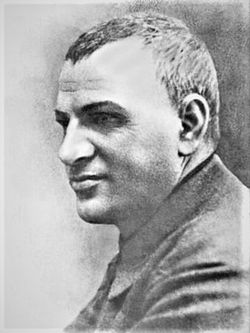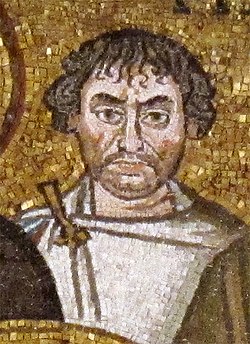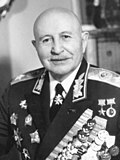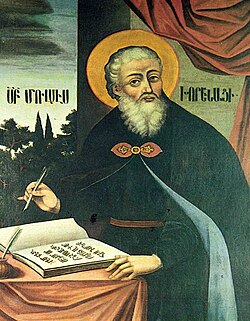This is a list of notable Armenians .

1st row: Hayk • Artaxias I • Tigranes the Great • Trdat III • Gregory the Illuminator
2nd row: Mesrop Mashtots • Vardan Mamikonian • Movses Khorenatsi • Anania Shirakatsi • Grigor Narekatsi
3rd row: Levon II • Toros Roslin • Momik • Sayat Nova • Khachatur Abovyan
4th row: Ivan Aivazovsky • Andranik Ozanyan • Hovhannes Tumanyan • Komitas • Mkrtich Khrimian
5th row: Tovmas Nazarbekian • Aram Manukian • Yeghishe Charents • Arshile Gorky • Gaia Gai
6th row: Artem Mikoyan • Ivan Bagramyan • Aram Khachaturian • Viktor Ambartsumyan • Tigran Petrosian
7th row: Martiros Saryan • Kirk Kerkorian • Sergei Parajanov • William Saroyan • Charles Aznavour
8th row: Vazgen I • Karen Demirchyan and Vazgen Sargsyan • Cher • Monte Melkonyan • Serj Tankian
2nd row: Mesrop Mashtots • Vardan Mamikonian • Movses Khorenatsi • Anania Shirakatsi • Grigor Narekatsi
3rd row: Levon II • Toros Roslin • Momik • Sayat Nova • Khachatur Abovyan
4th row: Ivan Aivazovsky • Andranik Ozanyan • Hovhannes Tumanyan • Komitas • Mkrtich Khrimian
5th row: Tovmas Nazarbekian • Aram Manukian • Yeghishe Charents • Arshile Gorky • Gaia Gai
6th row: Artem Mikoyan • Ivan Bagramyan • Aram Khachaturian • Viktor Ambartsumyan • Tigran Petrosian
7th row: Martiros Saryan • Kirk Kerkorian • Sergei Parajanov • William Saroyan • Charles Aznavour
8th row: Vazgen I • Karen Demirchyan and Vazgen Sargsyan • Cher • Monte Melkonyan • Serj Tankian










































